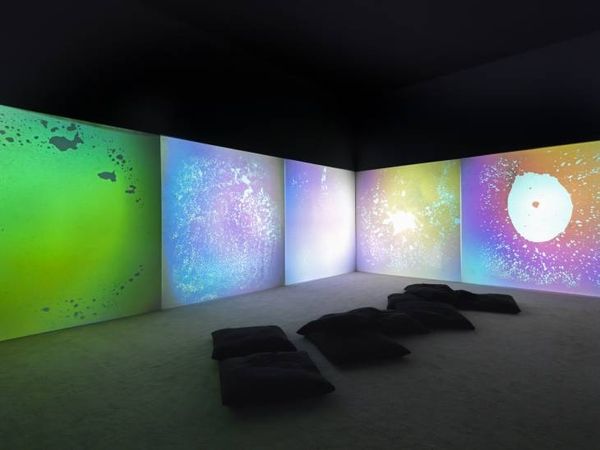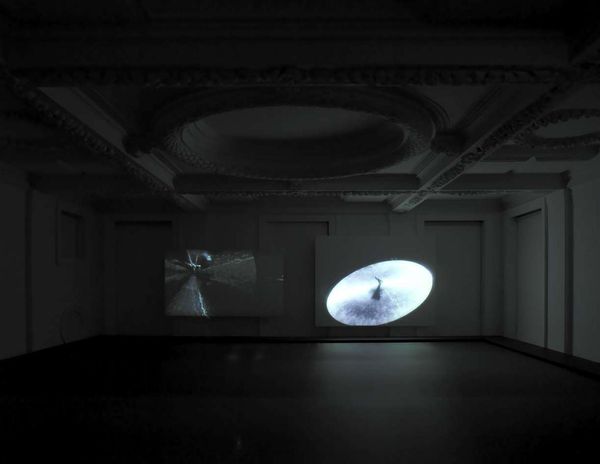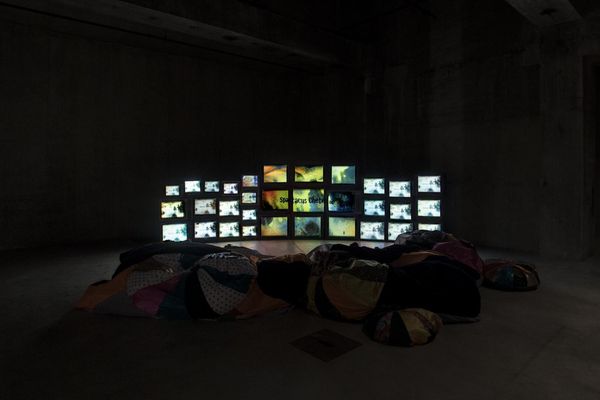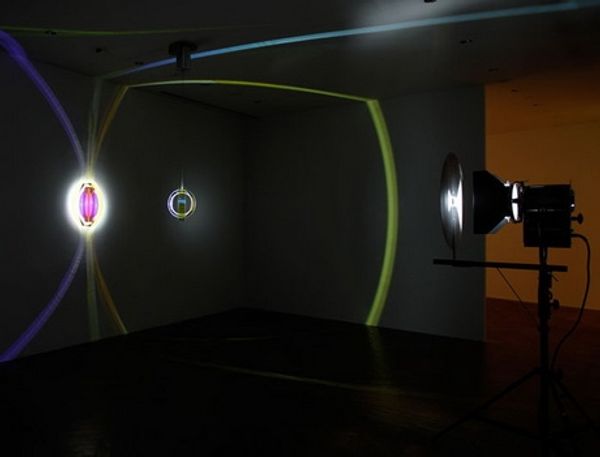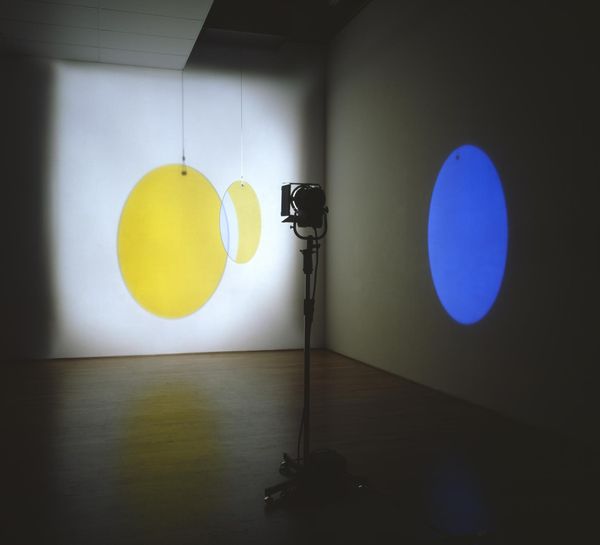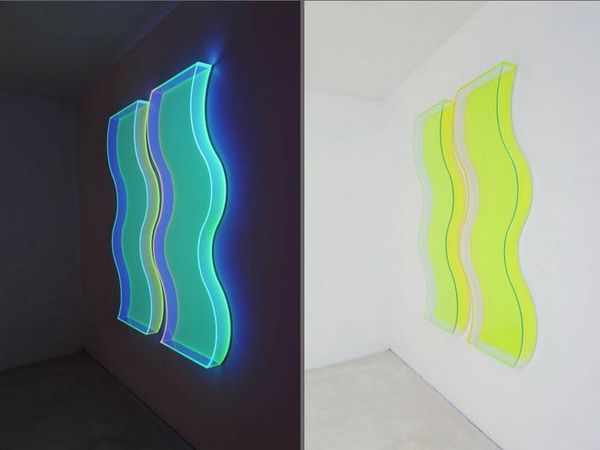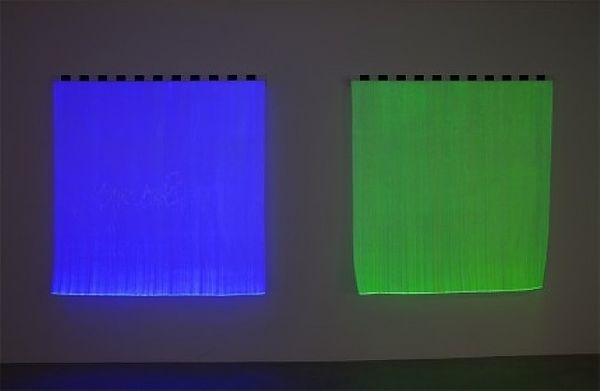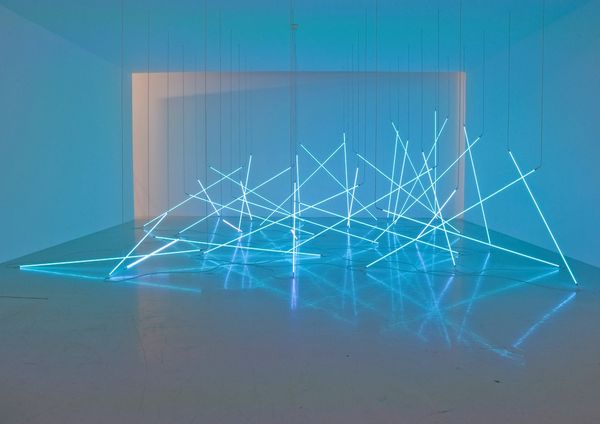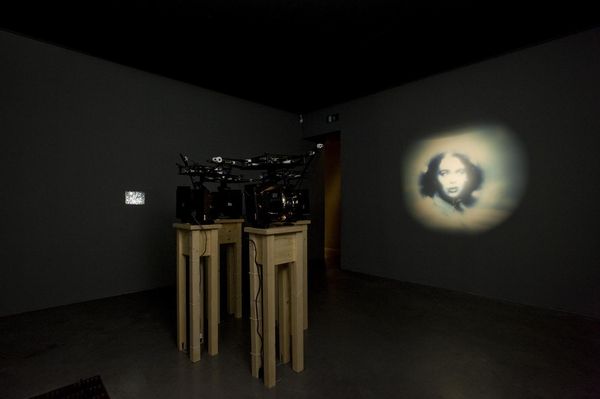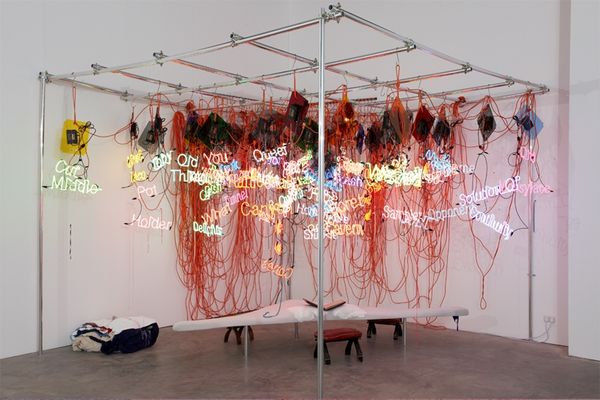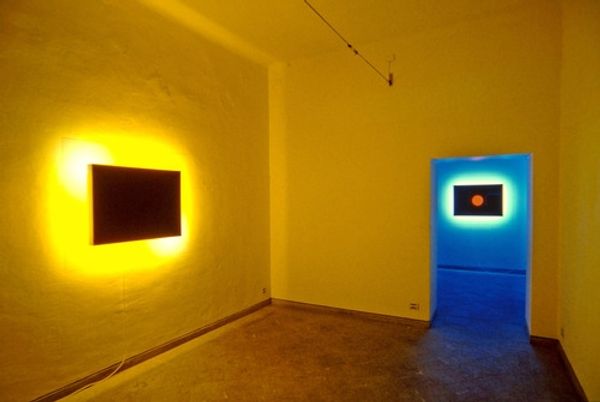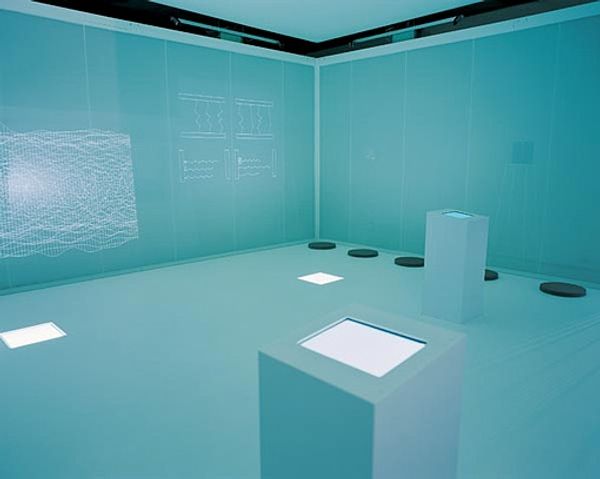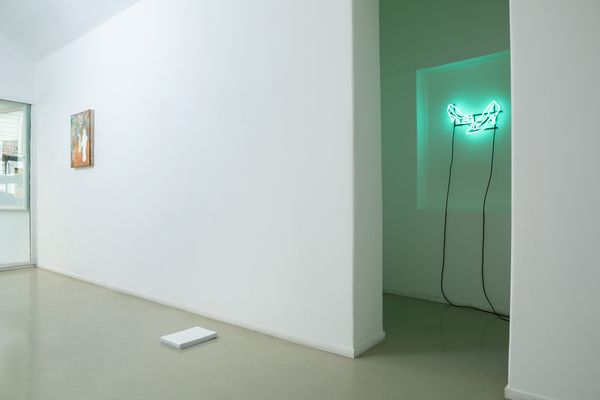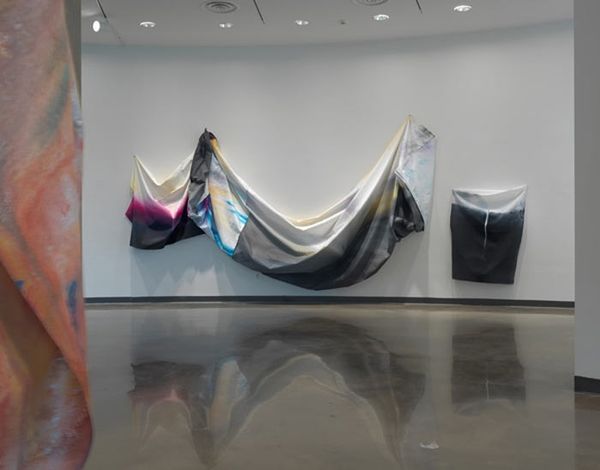
Dimensions: duration: 22 min overall display dimensions variable
Copyright: © Gustav Metzger | CC-BY-NC-ND 4.0 DEED, Photo: Tate
Curator: Here we have Gustav Metzger's "Liquid Crystal Environment" from the Tate Collections, a variable and durational installation of light and movement. Editor: It feels like stepping inside a lava lamp the size of a room, with the pillows inviting you to just melt into the experience. What's the story here? Curator: Metzger was interested in how technology shapes our experience. These ever-shifting projections, created using heated liquid crystals, were intended as a commentary on impermanence and change. Editor: I get a sense of unease, too, though. The constant flux makes it difficult to find something to latch onto, almost like information overload, you know? Curator: Absolutely. Metzger saw destruction as an inherent part of creation, reflecting on the socio-political upheavals of his time. Editor: The installation is a powerful, immersive reflection on how we perceive change. I am curious how viewers experience the work differently each time. Curator: Indeed, and that's part of Metzger's legacy. A dynamic installation prompts us to confront the transient nature of our world.
Comments
tate 6 months ago
⋮
http://www.tate.org.uk/art/artworks/metzger-liquid-crystal-environment-t12160
Join the conversation
Join millions of artists and users on Artera today and experience the ultimate creative platform.
tate 6 months ago
⋮
Liquid Crystal Environment consists of five projectors, each with a single slide containing liquid crystals. The projectors are equipped with rotating polarising filters and a cooling and heating system that cause the liquid crystal to liquefy or freeze, creating psychedelic effects of shifting colour and form. The work was first realised as a performance and recreated in 2005 for the Summer of Love exhibition at Tate Liverpool. Metzger worked closely with electrical engineer Adrian Fogarty to simulate the 1965–6 projections, fabricating custom built control units and creating software to control projector temperature, brightness of the lamp, and the rotation of the polarising filter. Gallery label, January 2016
